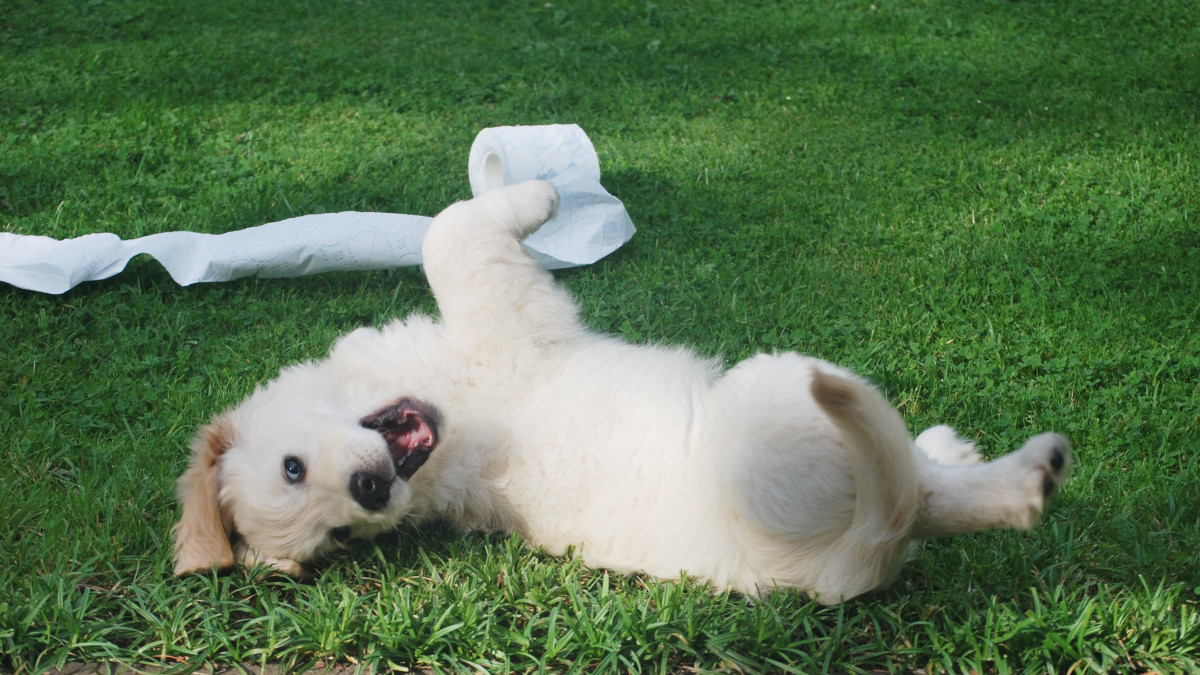Common misconceptions your dog wants you to know

Dogs talk to us all the time; we just need to learn their language. They primarily communicate visually, using their body language, but also use vocalisations and pheromones to communicate.
Here are six stress signals your dog is showing you that you may not know about:
1. Lip lick / tongue flick

In the absence of food, when your dog lip licks quickly, they may be feeling stressed, confused, or frustrated. This behaviour is commonly seen whilst having their nails clipped, being brushed or having a harness put on. This is also a way of telling other dogs that they are not a threat during interactions.
2. Shake off

A full body shake, when your dog is not wet, helps to relieve tension. Depending on the context, a shake off may help diffuse arousal, especially during play or an excitable encounter.
Examples include:
- greeting their guardian
- after waking up from a nap
- during a play session
- after being handled
- a stressful encounter with people or other dogs
3. Roll over
All dogs love a belly rub, right? Well, not always. Depending on the context and body language your dog might be trying to tell you something else.

An exposed stomach with soft eyes, flat ears, hips back, teeth showing as the mouth is relaxed and gums are drooping, and overall relaxed and curved body is an invitation to touch their tummy.
Unsure and anxious signals include stiff legs that paddle to push a hand away, a straight body, head turned away with eyes looking at you, lip licking, tail curled over genitals. This is also known as a ‘tap out’.
“If we listen to a dog’s whisper they never need to shout”
Chirag Patel, Behaviour and Training Consultant
4. Yawn

Although a yawn is typically thought of as a sign of tiredness, depending on the context it may mean something else.
Examples include:
- Picking up your dog’s harness and lead – anticipation and excitement
- Tense body, lip licking, looking away – stressed or anxious
- During a training session – confusion
5. Tail wag

A common mistaken belief about dogs is that a wagging tail means a happy dog. Tails are a great way for dogs to communicate how they are feeling.
A high, stiff tail wag is a sign your dog is unsure and is assessing the situation, usually seen with a tense face and body. Tight or narrow tail wags are a signal of stress, their rear end may be covered by their tail - give this dog some space.
A helicopter wag (when their tail goes round and round in wide circles), accompanied with a relaxed body and wiggly bum, is a happy dog, typically seen when they are greeting their guardians or doggy friends.
6. Growl

Understandably most people think a dog only growls when they are showing signs of aggression. However, have you ever been playing tug with your dog, and they’ve growled? You might think this a bad sign, but this may not be the case. Dogs tend to ‘mock fight’ during play and a short, higher pitched growl during play is nothing to worry about. Just remember tug is a cooperative game so let your dog win now and then.
When should you be concerned when your dog growls? A long low rumble of a growl with lunging, teeth showing, ears back and barking is your dog is requesting space, they are not comfortable in the situation and it’s time to de-escalate the situation. Never punish your dog for growling, it’s a clear indication that your dog is struggling and repeatedly punishing a growl can result in your dog skipping this gesture and going straight to an air snap or bite.
Categories: : dog body language, dog training, puppy training
Want support with your dog's problem behaviour?
Complete the history form or get in touch if you have questions
 Rachel Williams
Rachel Williams 
